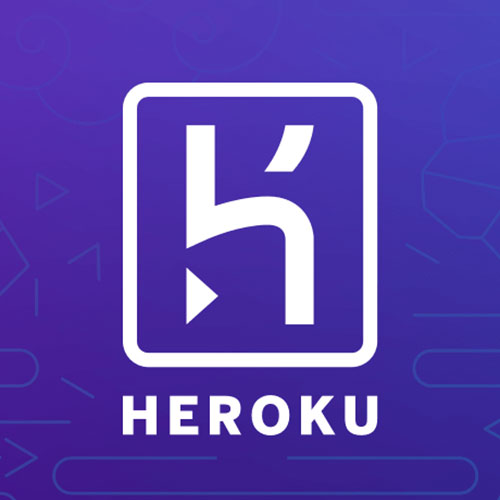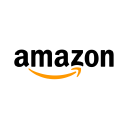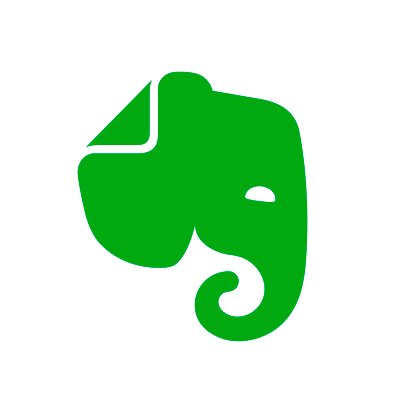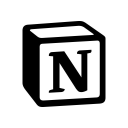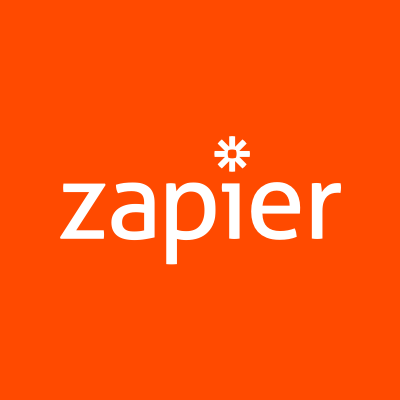How I Created A $18K/Month Referral Marketing Software
Hello! Who are you and what business did you start?
Hello, I’m Manuel Frigerio and I’m the founder of ReferralHero, a referral marketing platform used by over 6,000 companies all around the world, from startups to large companies such as Curve, Transferwise and HolidayPirates.
ReferralHero helps companies design and launch referral programs, from pre-launch waiting lists to giveaways and ambassador programs. Traditionally, launching a referral program requires a team of developers and a couple of weeks. ReferralHero was one of the first companies in the world to offer a widget that companies install on their website, with no need for a developer, and launch a referral program in hours instead of weeks.
We are now launching a new product that allows people to add an ambassador program to their newsletter (like TheHustle’s or The Morning Brew’s) in two clicks (ok, three clicks but who’s counting anyway?).
ReferralHero’s MRR is currently at around $18,000/month. After I launched ReferralHero (at the time called Maître) on ProductHunt in February 2016, we celebrated our first 1 million subscribers milestone (emails collected across our customers) after just 5 months. With over 2,200 upvotes, ReferralHero is still one of the Top 50 most upvoted products of all time. We now have 6,000+ customers who have collected over 30 million emails using our tool.

What's your backstory and how did you come up with the idea?
ReferralHero is my 3rd company but when I launched it I actually didn’t think it’d be a company one day. The back story is actually kinda funny; I was working in London at my previous startup called EventNinja, an analytics tool for Eventbrite (today you’d call it “Baremetrics for Eventbrite”).
One day, one of our customers (and friend) suggested we could do something to help him get more attendees to his event. Around the same time, a startup in a pre-launch phase called Monzo, a “challenger” bank in the UK, was making headlines for their hyper-viral waiting list; in short, people could sign up and get in the queue but they could also “jump” the queue by inviting their friends. The more people they invited, the higher up they’d get in the queue and the sooner they’d get their invitation to download the app.
However, at the time we brushed off the suggestion since it wasn’t relevant for EventNinja and I wasn’t exactly sure how it’d work, especially inside a product like EventNinja. A couple of months later, exactly on Boxing Day’s morning, I woke up with the idea I had been waiting for months. Instead of adding this feature to EventNinja, I made it a stand-alone widget that could be added to any website in minutes. I jumped straight into building the same day and the MVP was completed four days later.
I think a big part of my success was building an MVP very quickly and validating demand with real paying customers. That experience taught me the importance of building and shipping quickly.
At the time I was working at Google Campus, a co-working space in Shoreditch, London. I showed the prototype to a few friends for feedback and in two hours I had my first 4 customers. In a matter of a couple of days, I got another 5-6 customers and that’s when I knew I was onto something. Yet, in my mind, ReferralHero was just a side-project and so it stayed for the next 12-18 months.
Take us through the process of designing, prototyping, and manufacturing your first product.
I built the MVP in four days. I didn’t put too much effort into the design, to be honest. Partially because I’m not a good designer and partially because I wanted to validate the assumption that people would pay for a tool like ReferralHero.
I code in Ruby on Rails which made the development process super quick and easy and used APIs for pretty much everything else, from emails to analytics. I put the app on Heroku and I was ready to rock straight away.

Describe the process of launching the business.
After I got the first paying customers, I built a very basic website and planned the official launch on Product Hunt. I wrote a long post about the Product Hunt launch, but the short version is that it took a lot of planning and was very successful. My intuition was to offer a massively discounted lifetime account to anyone who signed up on that day. That resulted in hundreds of sign-ups and $1,000 in sales that day alone.

In hindsight, I think timing played a huge role. People were desperately looking for a product like ReferralHero and even though it wasn’t the best product in the world, they still bought it and loved it.
I think a big part of my success was building an MVP very quickly and validating demand with real paying customers. That experience taught me the importance of building and shipping quickly; until you get people paying for your stuff you don’t have a business, you have an idea.

Since launch, what has worked to attract and retain customers?
In the beginning, ReferralHero attracted a lot of customers because it was literally one of the very few players in a market that was hungry for a solution. This probably doesn’t help people who are looking for “tricks” to grow in the beginning but it still teaches an important lesson: it’s much easier to sell a product to people who are actively seeking a solution.
However, after a few months, my co-founder and I started to think a bit more strategically about acquisition and growth. We tried the “usual suspects”: Google Ads, automated Twitter following, Facebook Ads but they didn’t really work. I now know that paid ads in the early stage are a waste of time for 99% of startups because these platforms are much more valuable when you have reached product-market fit and know what you are doing.
Stay in your lane and play the long game.
In the early days, we also tried partnering with other products for giveaways and similar. This is not a long-term solution (it takes a long time to organize these giveaways, find partners, organizing, etc) but we did get some results and I’d recommend it to early-stage startups to get the word out and rack in the first customers.
The one thing that has worked consistently over the years is content marketing and SEO. We started writing consistently for our blog from day 1 and to this day we still get traffic for articles we wrote 4 years ago.
Ultimately though I believe in “product marketing”: make your product so awesome people can’t help but talk about it. We are social animals and word-of-mouth has always been and always will be the best form of marketing. That’s why the biggest chunk of my time has always gone into making the product awesome for our customers, listening to their feedback and implementing new features. People really love it when you listen to them and keep surprising them.
How are you doing today and what does the future look like?
ReferralHero has been profitable from day one and it’s always stayed profitable. Today we clock in around $18,000 MRR with margins typical of SaaS businesses at 70-80%.
ReferralHero is a very solid business with strong unit economics. Our ARPU is $95/month, which is considerably higher than the average in our industry. Some people think this is a problem but I think it’s good to have a high ARPU because it usually translates into less support and more resources for acquisition. Lifetime Value is also relatively high at $1,200.
I now know these numbers by heart but I think it’s counterproductive to focus prematurely on them. First: make sure your customers are happy and love your product. Then, and only when you have a sufficient number of happy customers, check out these numbers to see how you’re doing. There are plenty of tools that do this for you like Baremetrics or (my favourite) Profitwell but you can also use a simple spreadsheet.
Knowing these numbers help me figure out where I should be focusing next and what needs to be improved. For example, I know ARPU is high-ish so I can spend more money on acquisition but retention instead needs to be improved.
The plan for the next 6-12 months is to launch “niche” products in the referral marketing space. For example, we are currently working on an ambassador tool for newsletters (think TheHustle’s ambassador program). If you have a MailChimp or ConvertKit newsletters, please get in touch. Being a niche allows us to be laser-focused on the needs of a specific target group instead of trying to be everything for everyone, which is what most of our competitors do.
Build for a problem/pain. Make sure you’re solving a problem before building anything.
Through starting the business, have you learned anything particularly helpful or advantageous?
I’ve made a lot of mistakes with ReferralHero but I think the biggest one was to consider it a side-projects for the first 12-18 months. During that time many competitors entered the market and saturated it.
Another mistake was to not invest in creating a brand from day one. I think a lot of people in the SaaS space make this mistake because branding is not seen as a differentiator for tech products but I beg to disagree. With a low barrier to entry, startups costs going down every year and the broad availability of no-code tools, almost every SaaS business will eventually find itself in a saturated market. When that happens you have two options: competing on price (usually a very bad option) or creating a trustworthy, premium brand people are willing to pay more for. I’m now doing the latter.
Apart from these (big) mistakes, I did some good things too. Probably the best decision was to never follow trends or fads. For example, while virtually every company in the referral marketing space jumped on the Facebook Messenger band-wagon (offering referral programs that run on Facebook Messenger), we decided to stay in our lane and focus on what we do best: grow email lists. Then when Facebook announced they’d stop supporting sharing functionalities for Messenger all these companies had to change their product (and sometimes shut it down).
I can summarise the lesson I’ve learned over the years in two sentences:
- Most marketing advice out there (including this article) is porn. Do shit and learn from it.
- Stay in your lane and play the long game
What platform/tools do you use for your business?
My favourite tools to run ReferralHero are:
- Helpscout because it makes customer support almost fun
- Zapier because I can’t even remember how life was before Zapier
- Google Sheets because I love spreadsheets
- Todoist because I literally run my life on it
- Calendly because it makes super easy to schedule calls with prospects
- ProfitWell because you can’t run a successful business if you don’t know your unit economics
What have been the most influential books, podcasts, or other resources?
- Anything You Want by Derek Sivers. A reminder that ”When you make a company, you make a utopia. It’s where you design your perfect world.”
- Rich Dad Poor Dad by Robert Kiyosaki. Awake-upp call about how the world really works.
- How to win friends and influence people by Dale Carnegie. It taught me how to get what I want in life using empathy and kindness.
- Influence by Robert Cialdini. You can’t do any marketing until you understand the basis of human psychology.
- The 22 Immutable Laws Of Marketing by Al Ries & Jack Trout. A lot has changed since this book was published but the core principles are still valid. A timeless book.
Advice for other entrepreneurs who want to get started or are just starting out?
- Build for a problem/pain. Make sure you’re solving a problem before building anything.
- When the time to build has come, build an MVP very quickly and give it to people. Seek real feedback from people who use the product.
- Build for a specific use case. Target a niche. Ideally a niche of a niche.
- Just do it. Ten years from now you’ll look back and wished you had started earlier.
Are you looking to hire for certain positions right now?
I’m always interested in meeting smart people. If you’re a talented content writer who has a track record for writing marketing blog posts, get in touch.
Where can we go to learn more?
If you have any questions or comments, drop a comment below!

Download the report and join our email newsletter packed with business ideas and money-making opportunities, backed by real-life case studies.

Download the report and join our email newsletter packed with business ideas and money-making opportunities, backed by real-life case studies.

Download the report and join our email newsletter packed with business ideas and money-making opportunities, backed by real-life case studies.

Download the report and join our email newsletter packed with business ideas and money-making opportunities, backed by real-life case studies.

Download the report and join our email newsletter packed with business ideas and money-making opportunities, backed by real-life case studies.

Download the report and join our email newsletter packed with business ideas and money-making opportunities, backed by real-life case studies.

Download the report and join our email newsletter packed with business ideas and money-making opportunities, backed by real-life case studies.

Download the report and join our email newsletter packed with business ideas and money-making opportunities, backed by real-life case studies.


